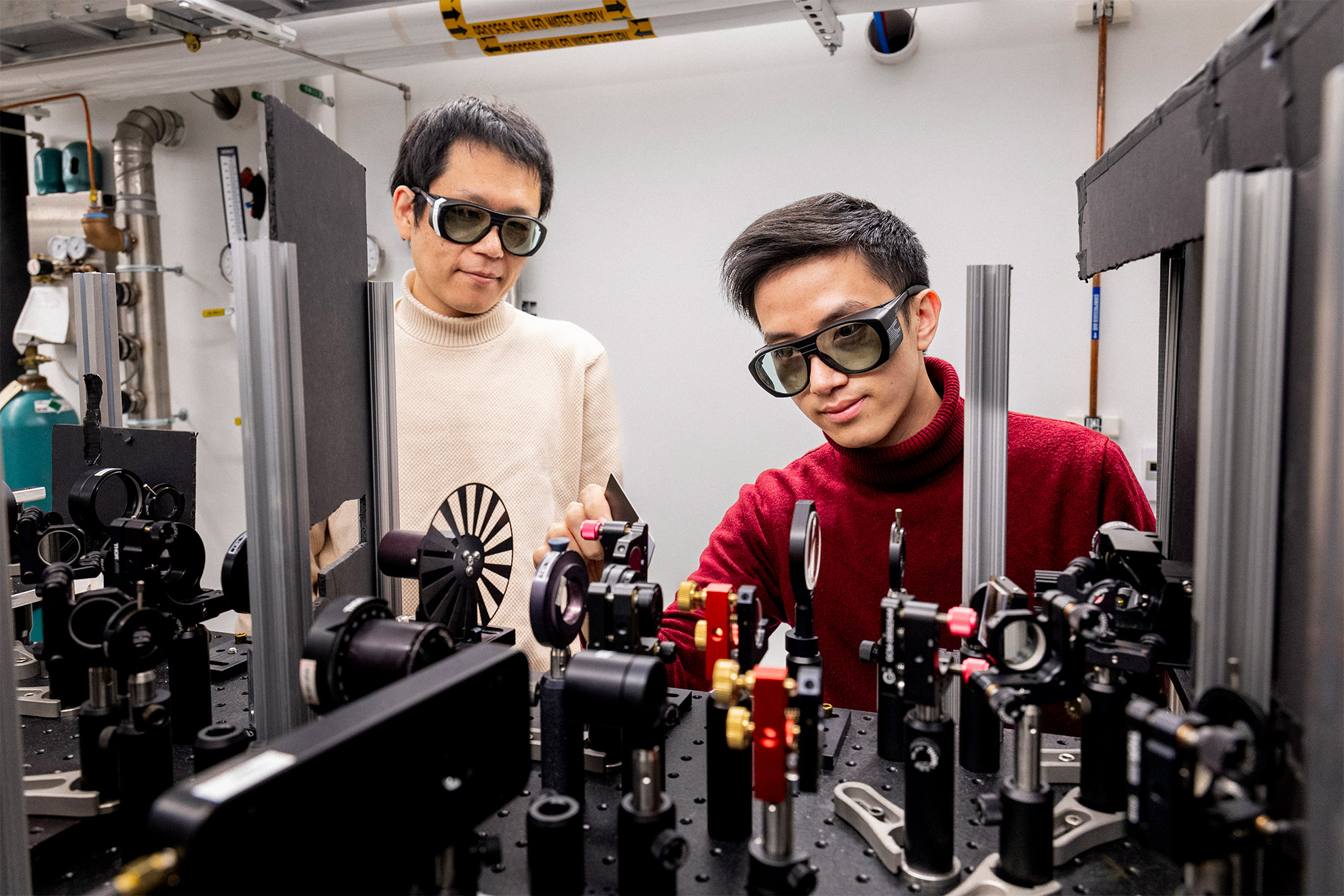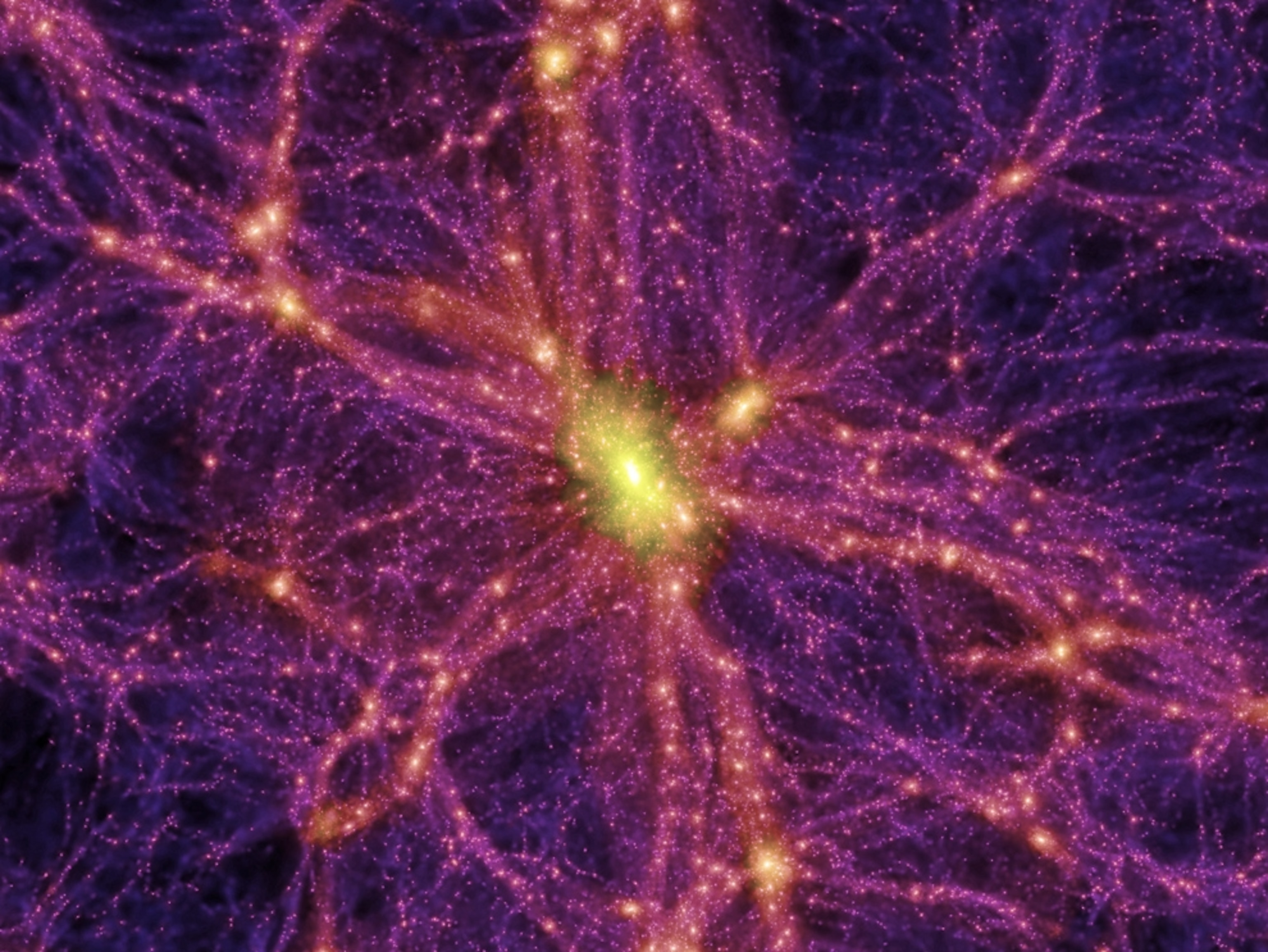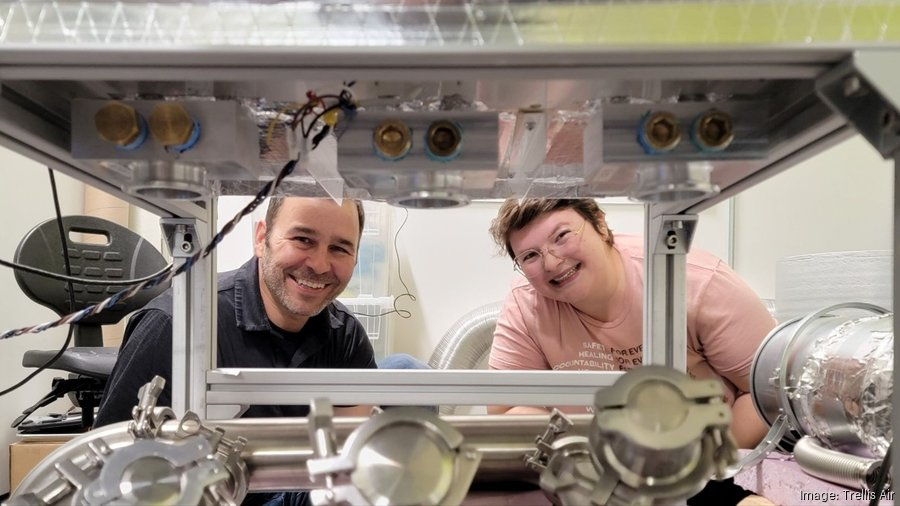Axion quasiparticles have emerged as a fascinating concept in the realm of particle physics, representing a potential key to understanding dark matter, the elusive substance believed to make up a significant portion of the universe’s mass. Researchers are on the brink of confirming the existence of these intriguing entities, which could ultimately provide insights into both the fundamental building blocks of matter and the historical evolution of the cosmos. Recent studies led by Harvard University highlight the innovative use of quasiparticles in the hunt for axions, signaling a significant advancement in quantum technologies and cosmological research. As scientists strive to unravel the mysteries of dark matter, the exploration of axion quasiparticles might pave the way for groundbreaking discoveries that reshape our understanding of the universe. With such promising developments, the future of particle physics is undeniably exciting, as these discoveries may redefine our grasp of the cosmos and its fundamental components.
In the exploration of fundamental particles, researchers are turning their attention to a theoretical framework involving axion particles—believed to play a crucial role in the dark matter puzzle. These theoretical constructs, referred to as axion quasiparticles, are under investigation for their potential in high-energy physics and the quest to uncover the nature of the cosmos. Recent breakthroughs in manipulating materials like manganese bismuth telluride have opened new avenues for validation and experimentation, showcasing how these quasiparticles could function as detectors for dark matter. By leveraging quantum technologies and interdisciplinary approaches, scientists are hopeful that these endeavors will not only shed light on dark matter but also significantly impact the field of particle physics. As researchers delve deeper into the properties of these quasiparticles, the implications may resonate throughout cosmology, ultimately enhancing our understanding of the universe itself.
Understanding Axion Quasiparticles
Axion quasiparticles represent a groundbreaking theoretical development in particle physics, serving as essential simulators for the elusive axion particles. The relationship between these quasiparticles and dark matter is a focal point in contemporary research. Leveraging advanced materials like manganese bismuth telluride, scientists have cultivated these quasiparticles in a 2D crystal structure, creating an optimal environment for their study. This approach not only facilitates theoretical predictions but also opens new pathways for practical experiments designed to hunt for dark matter. Researchers are optimistic that by detecting the interactions of these quasiparticles with other particles, they might confirm the existence of axions and decode some of the universe’s biggest mysteries.
Innovations in quantum technologies will also play a pivotal role in the exploration of axion quasiparticles. For instance, sophisticated ultrafast laser optics allow scientists to observe the coherent behaviors and dynamic properties of these quasiparticles in real-time. Such high-resolution observation is crucial for transforming theoretical models into observable phenomena, providing empirical backing for the longstanding hypotheses surrounding dark matter and axions. As researchers continue to refine their techniques and materials, the potential applications and implications for understanding the cosmos grow exponentially.
The importance of axion quasiparticles transcends basic research; they also have profound implications for future technological advancements. By utilizing the unique properties of axion quasiparticles, researchers are pioneering new optical applications, which could redefine material sciences. For example, the interaction between light and axion polaritons could pave the way for advanced quantum communication systems, enhancing data transfer and computational efficiency. These developments align perfectly with the growing intersections of quantum technologies and cosmological inquiries, showcasing the comprehensive impact of axion research beyond theoretical physics.
Furthermore, researchers are not just focusing on confirming the existence of axions; they are also looking to develop practical methods to detect dark matter through signals emitted by these particles. Acoustic monitoring techniques combined with axion quasiparticle dynamics could lead to groundbreaking advancements in dark matter detection, akin to developing a cosmic car radio capable of tuning into specific frequencies. As scientists continue to delve deeper into the realms of particle physics, understanding axion quasiparticles will be crucial for unlocking answers that could reshape our grasp of the universe.
The Role of Dark Matter in Cosmology
Dark matter is a fundamental mystery within the field of cosmology, constituting approximately 85 percent of the universe’s mass, yet remaining undetectable through conventional means. Understanding dark matter is crucial as it influences the formation of galaxies, structure, and the overall dynamics of the universe. Theoretical models propose several candidates for dark matter, among which the axion has emerged as a leading contender. The search for axions is not just an academic pursuit; it holds the promise of answering some of the most profound questions about the universe’s composition and its evolution over billions of years.
Recent experimental efforts at institutions like Harvard and King’s College London highlight the innovative approaches researchers are taking to uncover the nature of dark matter. By combining disciplines such as particle physics and condensed-matter physics, scientists are pushing the boundaries of how we detect and characterize dark matter. The direct connection between axions and dark matter illustrates the potential of this research to yield not only significant scientific discoveries but also to inform future technologies that could enable deeper explorations of cosmic phenomena.
Moreover, addressing the dark matter mystery requires a collaborative effort across various scientific realms. Current research emphasizes the utilization of axion quasiparticles as a novel methodology for detecting dark matter signatures, thus enriching the cosmological dialogue. As dark matter exerts gravitational influence on visible matter, unraveling its properties through experimental verification of axion particles can lead to transformative insights into dark energy and the universe’s ultimate fate. Understanding this interplay increases the likelihood of developing experimental setups capable of not just observing dark matter, but also understanding its role in cosmic evolution.
In the next decade, efforts to confirm the existence of axions and understand dark matter will likely accelerate, propelled by the advancements in technology and methodology. Collaborative research will pave the way for breakthroughs that could revolutionize our understanding of the universe, as researchers harness the power of axion-induced measurements to push the frontiers of cosmology and particle physics.
Innovations in Quantum Technologies
Quantum technologies are on the brink of revolutionizing numerous fields, thanks to advancements in research focused on axions and other quasiparticles. The investigation into axion quasiparticles offers profound implications for the development of next-generation quantum devices. These technologies promise unprecedented levels of computational power and efficiency, paving the way for applications in everything from cryptography to advanced sensing. As scientists explore the unique interactions of axion quasiparticles within specially engineered materials, they are revealing pathways to create devices that can harness quantum phenomena for practical use.
Additionally, the synergy between condensed-matter physics and quantum technologies exemplifies the interdisciplinary approach that can spur innovation. By leveraging the properties of materials like manganese bismuth telluride, researchers are not only investigating fundamental questions about dark matter and particle physics but also crafting materials with bespoke quantum attributes. As a result, the fusion of these disciplines enhances the functionality and application spectrum of quantum devices, offering substantial prospects for societal advancements.
Moreover, the focus on axion quasiparticles can catalyze further developments in quantum communications, tapping into their unique features for secure data transmission. As these quasiparticles facilitate novel quantum states, the potential for creating ultra-sensitive detectors and communication systems becomes apparent. Researchers are optimistic that discoveries around axion quasiparticles will drive the technology forward, providing tools capable of addressing global challenges in data security and environmental monitoring. This interface between new physics and practical technology underscores the transformative potential of ongoing research in this niche area, which could lead to groundbreaking solutions across various sectors.
Future Directions in Axion Research
As researchers continue to explore the properties of axion quasiparticles, the future of axion research looks promising and full of potential discoveries. Current experimental setups empower scientists to study the interactions that could lead to the direct detection of dark matter axions. Future endeavors will likely explore more sophisticated materials and methodologies that enhance the sensitivity and reliability of these experiments. For instance, optimizing the quantum characteristics of existing materials or developing new ones could yield higher rates of interaction with axion-like particles, thus improving dark matter detection capabilities significantly.
Moreover, interdisciplinary collaboration will be key as researchers work towards a comprehensive understanding of axion properties. Researchers from various backgrounds, including material science, quantum physics, and cosmology, are bringing their expertise together to form a cohesive framework for axion research. This collaborative effort can accelerate innovation, leading to novel experimental technologies and rich insights into the fundamental nature of dark matter, thereby reinforcing the need for sustained investment and focus on this vital area of study.
In tandem with advancements in experimental physics, theoretical frameworks will also evolve to accommodate new findings associated with axion quasiparticles. Developing robust models to interpret experimental data and predict new phenomena will be crucial. This dynamism between theory and experiment will establish a versatile research landscape capable of responding to unexpected results and refining our understanding of dark matter. As we continue this pursuit, the insights gained from axion research could uncover crucial aspects of the fundamental fabric of the universe and its underlying forces.
Collaborations in Scientific Research
Collaboration stands at the core of the successful research efforts into axion quasiparticles and dark matter. Institutions around the globe, including Harvard, King’s College London, and UC Berkeley, are pooling their resources, knowledge, and expertise in interdisciplinary partnerships to uncover the mysteries of the cosmos. Such collaborative frameworks allow for sharing of ideas, technologies, and innovative practices, ultimately accelerating the pace of discovery in particle physics and cosmology. As these teams tackle the complexities of axion research, their combined resources amplify the potential for groundbreaking advancements, transforming theoretical explorations into practical experiments.
The synergy created through these collaborations not only enhances the depth of scientific inquiry but also increases the visibility of research topics like axion quasiparticles. Engaging with a global network of researchers helps to disseminate findings, garner support for funding, and attract new talent into the field. This interconnectedness among research institutions fosters an ecosystem where interdisciplinary perspectives thrive, energizing the scientific community towards a shared goal of unraveling dark matter’s secrets.
As researchers collectively push the frontiers of knowledge in axion research, they are also broadening their quest for partnerships across various fields. Engaging with experts in fields as diverse as materials science, engineering, and computing can yield novel insights that might not emerge through conventional research approaches. For instance, breakthroughs in material characterization or computational modeling might lead to rapid advancements in experiments aimed at detecting dark matter axions. This multifaceted collaboration model represents the best practices of modern scientific research, leveraging diverse skill sets and perspectives to drive forward the collective goal of understanding the nature of dark matter.
Potential Implications for Particle Physics
The ongoing investigation into axion quasiparticles carries significant implications for the broader field of particle physics. The detection and characterization of axions could fundamentally reshape our understanding of particle interactions and the overall framework of the Standard Model. If axions prove to be the dark matter candidates scientists propose, it could provide answers to questions about the universe’s mass distribution, structure formation, and the role of dark energy in cosmic evolution. As researchers experiment with these quasiparticles, the insights they gain may bridge existing gaps in theoretical models, shedding light on phenomena that have puzzled scientists for decades.
Moreover, these advancements can inform the design and operation of future particle accelerators and detection facilities. The new techniques developed for handling axion quasiparticle interactions could revolutionize the methodologies employed in high-energy experiments. By improving detector sensitivity and measurement precision, future experiments could systematically explore new physics beyond the Standard Model, helping to validate or refine our understanding of fundamental forces.
Furthermore, the rise of quantum technologies stemming from axion research introduces transformative possibilities within particle physics. The innovative measurement methods that arise from the exploration of axion quasiparticles could lead to enhanced precision in particle detections, facilitating an expanded search for other exotic particles and interactions. This interplay between pioneering technology and particle physics can potentially catapult us toward discoveries that challenge existing paradigms, engendering a new era of scientific inquiry. Thus, the ramifications of axion research extend far beyond the realm of dark matter, offering a vibrant future for the field of particle physics.
Collective Efforts in Dark Matter Research
The journey to uncover the nature of dark matter involves a concerted global effort, with researchers dedicating their expertise and resources toward a unified goal. As more scientists engage in the axion dark matter discourse, the collaborative landscape strengthens, allowing for a variety of experimental approaches. By combining theoretical models, simulations, and experimental techniques, a more comprehensive understanding of dark matter interactions emerges, pushing the field forward. These collective efforts are crucial, especially in a time when dark matter remains a dominant topic of inquiry within cosmology and particle physics, leading to a wealth of research papers and discussions that echo the excitement once experienced during the Higgs boson discovery.
Moreover, international collaborations provide the framework for sharing insights and resources necessary for probing fundamental questions about the universe. Research institutions working together can establish large-scale experiments that leverage diverse expertise and cutting-edge technology. As a result, data generated from collaborative efforts fosters an enriched dialogue that helps connect theoretical insights with empirical evidence, ultimately illustrating the multifaceted nature of dark matter research.
The collaborative spirit in dark matter research not only accelerates discovery but also serves as an educational model for emerging scientists. Through exposure to a range of methodologies, students and young researchers can benefit from interdisciplinary interactions, gaining insights that enrich their understanding of the scientific enterprise. This conducive environment cultivates the next generation of physicists, engineers, and material scientists who will carry the torch forward in the quest to unravel the mysteries of dark matter and its components. In this way, the collective efforts in dark matter research sustain a vibrant and evolving scientific community, poised to tackle the next challenges that await in the exploration of our universe.
Frequently Asked Questions
What are axion quasiparticles and their significance in dark matter research?
Axion quasiparticles are simulations of axion particles, theorized to be a fundamental component of dark matter. They play a crucial role in experiments aimed at confirming the existence of axions, which could explain the mysterious nature of dark matter that comprises about 85% of the universe’s mass.
How are axion quasiparticles detected in quantum technologies?
The detection of axion quasiparticles involves using specific materials, such as manganese bismuth telluride, designed to exhibit unique electronic properties. Researchers utilize ultrafast laser optics and advanced measurement tools to observe the reactions of these quasiparticles, providing insights into actual dark matter axions.
What implications do axion quasiparticles have for cosmology?
The study of axion quasiparticles is vital for cosmology as it may lead to breakthroughs in understanding dark matter. By confirming the presence of axions, researchers can gain insights into the composition and evolutionary history of the universe, potentially reshaping our knowledge of cosmic phenomena.
Why are axions considered a leading candidate for dark matter?
Axions are deemed a leading candidate for dark matter because they provide a theoretical framework that explains some outstanding problems in particle physics. Their predicted properties align with what is observed through indirect signals in the universe, contributing to the contemporary quest to understand dark matter.
What advancement did Harvard researchers make regarding axion quasiparticles?
Researchers at Harvard, in collaboration with King’s College London, demonstrated the coherent behavior of axion quasiparticles through precision experiments. This advancement opens pathways for developing new dark-matter detectors and innovations in quantum technologies.
How might axion quasiparticles influence future optical applications?
The axion polariton, a new form of light-matter interaction derived from axion quasiparticles, has the potential to revolutionize optical applications by leading to novel technologies that exploit these dynamics for communication and sensing technologies.
What are the potential future experiments involving axion quasiparticles?
Future experiments involving axion quasiparticles aim to probe dark matter more effectively and refine detection methods to capture signals from axion particles. This research could significantly boost the scientific community’s quest for understanding dark matter.
Can axion quasiparticles aid in detecting dark matter signals?
Yes, axion quasiparticles can serve as a ‘cosmic car radio’ to detect specific radio frequencies emitted by axion particles. This method represents a cutting-edge approach to capturing elusive dark matter signals that previous technologies have struggled to identify.
| Key Point | Description |
|---|---|
| Existence of Axions | Axions are theoretical particles suggested to be a fundamental component of dark matter, a critical substance in the universe’s composition. |
| Recent Study | Researchers from Harvard and King’s College London published findings confirming the use of quasiparticles in the search for axions. |
| Quasiparticle Role | Axion quasiparticles act as detectors for real axion particles, as they can register the effects when struck by dark matter axions. |
| Materials Used | The study utilized manganese bismuth telluride, a material with notable electronic and magnetic properties, crafted into 2D crystals for optimal results. |
| Significance of Discovery | Demonstrating axion quasiparticle interactions opens new avenues for both particle physics and advanced quantum technologies. |
| Future Directions | The research team aims to enhance their experiments to look for dark matter and refine detection methods for axion properties. |
Summary
Axion quasiparticles are central to the quest for understanding dark matter, a mysterious component that makes up a significant portion of the universe’s mass. The recent breakthroughs in identifying and studying axion quasiparticles not only validate theoretical predictions but also pave the way for innovative technologies in particle physics. As researchers continue to refine their methodologies and explore the properties of axions, the potential for confirming their existence and uncovering their role in the universe becomes increasingly tangible. This exciting era in dark matter research marks a critical juncture that could lead to revolutionary advancements in our understanding of the cosmos.







